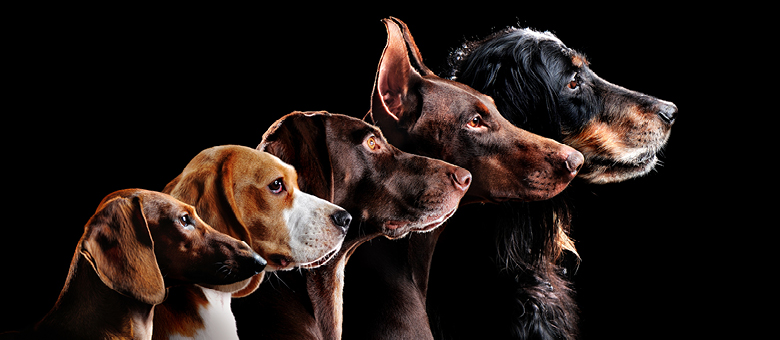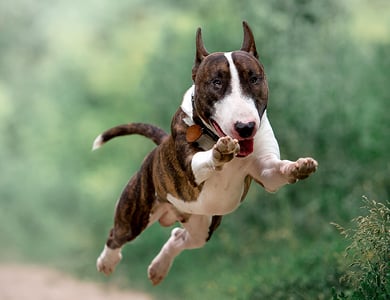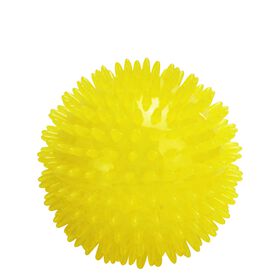 Have you ever wondered about the origins of your loyal pet? Although research on the subject is constantly evolving, here’s a brief history.
Have you ever wondered about the origins of your loyal pet? Although research on the subject is constantly evolving, here’s a brief history.
Canids belong to the order of carnivores. They have pointed canines, teeth adapted to an omnivorous diet and a skeleton made for digitigrade movement (walking on toes). The canid family has three subfamilies: the extinct hesperocyoninae and borophaginae, and the surviving caninae, or canines (e.g., domestic dogs, wolves, jackals, foxes and coyotes).
How dogs were domesticated has not been clearly established to date. However, human bones have been discovered buried with the skeletons of canids resembling wolves on sites dating back over 100,000 years. The domestic dog, Canis familiaris, would therefore be the descendent of a wild canid.
At the time, dogs and humans shared the same lifestyle. They were nomads and fed on the same game. The relationship between wolves and humans developed mainly for hunting purposes, and the first primitive dogs were hunting dogs. Then, humans developed a sedentary lifestyle, and needed dogs to help protect and herd animals.
The domestication of wolves apparently began in Asia. The first step involved taming certain individuals, imprinting them on humans at birth and then managing their reproduction. Over time, several behavioural and morphological changes occurred, and humans favoured some over others in order to produce distinct breeds. According to archeozoologists, dogs are a species that have remained at the adolescent growth stage, and their survival is completely dependent on humans.

Groups, breeds and standards
The Fédération Cynologique Internationale (FCI), based in Belgium, is responsible for keeping breed registries, regulating international dog events, promoting the standards associated with each breed and overseeing international championships.
For each breed, the FCI has established a classification with the dog’s:
- original name
- names currently in use
- information on its behaviour
- education
- use
The standards are based on various criteria, including breed origins and distinctive physical features.
Three other vitally important organizations work with the FCI:
- the Kennel Club (KC) in the United Kingdom
- the American Kennel Club (AKC) in the U.S.
- the Canadian Kennel Club (CKC) in Canada
The following are the seven groups of dogs recognized by the Canadian Kennel Club, and a few examples of the breeds listed in each one.
First group: sporting dogs
– pointer, spaniel, retriever, setter, etc.

Second group: running dogs and hounds
– basset hound, beagle, dachshund, greyhound, etc.

Third group: working dogs
– Akita, Bernese mountain dog, boxer, mastiff, Dane, husky, Rottweiler, Saint Bernard, schnauzer, etc.

Fourth group: terriers
– bull, fox, cairn, border, Scottish, Kerry blue, wheaten, etc.

Fifth group: toy breeds
– Maltese, poodle, pug, Chihuahua, cavalier King Charles spaniel, papillon (continental toy spaniel), English toy spaniel, Italian greyhound, miniature pinscher, Pomeranian, Yorkshire terrier, etc.

Sixth group: non-sporting dogs (pets)
– Japanese Akita, bichon frisé, English bulldog, French bulldog, standard poodle, Dalmatian, chow chow, Lhasa apso, Chinese shar-pei, shih tzu, Boston terrier, etc.

Seventh group: herding dogs
– shepherd: German, English, Australian, Belgian, Pyrenean, Shetland sheepdog (sheltie), border collie, collie, Pembroke Welsh corgi, etc.

When choosing a new lifelong pet, take the time to learn about the breed’s origins, features and needs to make sure that it’s a good fit.








